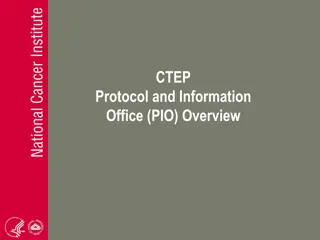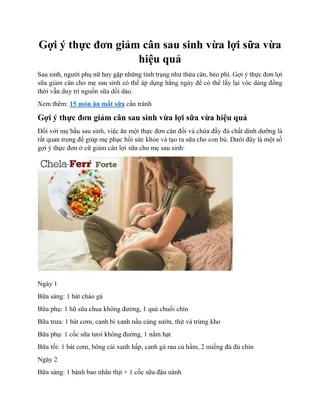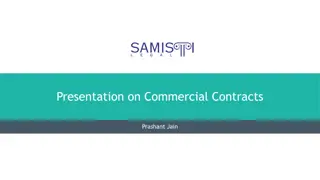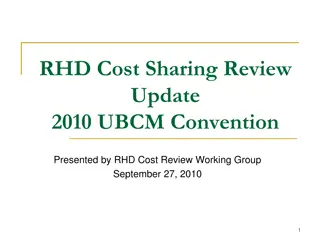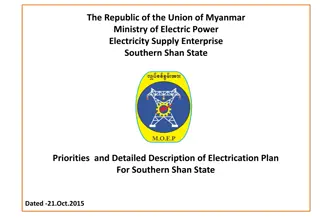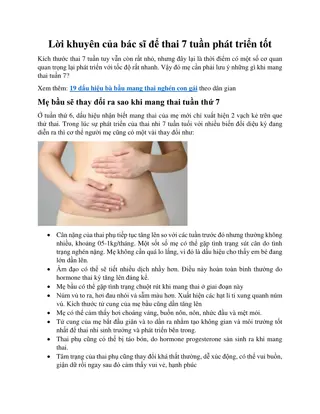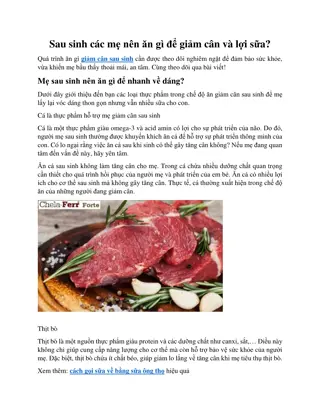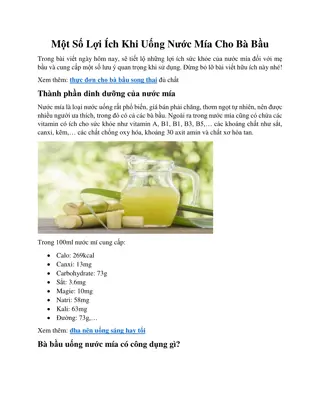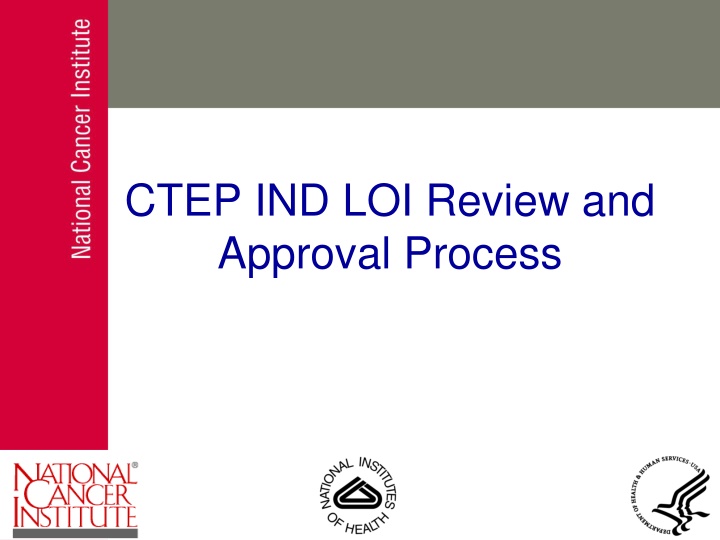
Competitive LOI Review and Approval Process in Clinical Trials
The process of submitting a Letter of Intent (LOI) for a clinical trial under the CTEP.IND review and approval system involves various elements such as study proposals, LOI review background, feasibility, and the review process. The LOI should include specific components like rationale/hypothesis, trial design, endpoints, and statistical plan. An explicit rationale along with a hypothesis is crucial for the submission, with examples provided for both poor and well-stated rationales. The competitive LOI review process is rigorous, with only around one-third of LOIs being approved after priority scoring and assessment of scientific feasibility.
Download Presentation

Please find below an Image/Link to download the presentation.
The content on the website is provided AS IS for your information and personal use only. It may not be sold, licensed, or shared on other websites without obtaining consent from the author. If you encounter any issues during the download, it is possible that the publisher has removed the file from their server.
You are allowed to download the files provided on this website for personal or commercial use, subject to the condition that they are used lawfully. All files are the property of their respective owners.
The content on the website is provided AS IS for your information and personal use only. It may not be sold, licensed, or shared on other websites without obtaining consent from the author.
E N D
Presentation Transcript
CTEP IND LOI Review and Approval Process
Study Proposals Letter of Intent May be sent in response to solicitation May be sent by investigator with interesting idea If using combinations, one agent must be held under CTEP IND After LOI Approval 30 - 60 days to submit a protocol If CTEP is the IND holder and sponsor of trial, CTEP monitors the trial
LOI Elements and Review Background & rationale Trial design Eligibility Dosing Correlative studies Endpoints Statistical plan Accrual plan Science/Design Documented accrual Competing studies Source of support for clinical trial & correlatives Components of a competitive Letter of Intent http://ctep.cancer.gov/guidelines/index.html Feasibility
LOI Review Process Review and Priority Scoring of Clinical and Laboratory Components by IDB Science Feasibility Consistency with CTEP development plan Not duplicative Review at Protocol Review Committee (PRC) Industry partner for review and agreement to supply agent Full approval letter with protocol documents ~ 1/3 LOIs received are approved
Elements of a Competitive LOI - Rationale/Hypothesis Rationale should be explicitly stated. Specific reason to test an agent should be offered. in vitro or in vivo experiments molecular biological rationales prior clinical data Succinctly stated Primary endpoint of the study Study design of study provides an answer to the proposed question.
Elements of a Competitive LOI - Rationale/Hypothesis, cont d A poorly stated rationale and hypothesis: Cancer X has a poor prognosis and there is no approved effective therapy. It is possible that agent Y will demonstrate activity against cancer X in humans.
Elements of a Competitive LOI - Rationale/Hypothesis, cont d A well-stated rationale and hypothesis: Cancer X is known to over express the Q receptor in 75% of specimens sampled from patients who have a recurrence after definitive regional therapy. Drug A binds to and inactivates the growth stimulating effects of receptor Q, and in multiple animal tumor models of cancer X, drug A has been shown to have twice the tumor shrinkage rate as commercially available drugs, and cures 30% of all mice treated. We hypothesize that drug A will demonstrate an overall response rate of at least 30% by RECIST when administered to chemotherapy na ve patients with cancer X, whose cancers have recurred following regional therapy, compared to 15% who historically respond when treated with commercially available drugs.
Elements of a Competitive LOI - Supportive Data Supportive data: Don t need to provide information already known to CTEP (i.e., from solicitation) Do include summary of unpublished data, with figures, pre-prints or a summary from a grant progress report or grant application, if available, for the reviewers. Example: Good: of 8 patients with prostate cancer in the phase I trial, who had disease progression after prior therapy with docetaxel, 4 receiving docetaxel with agent Y had PR sustained from 3-9 months Bad: we saw some activity in our (unpublished) phase I trial that we want to pursue in this phase II trial
Elements of a Competitive LOI - Endpoints/Statistics Primary endpoint must be explicitly state Statistics supporting the endpoint and trial design must be provided Poorly-stated endpoint/statistics: We will assess progression free survival (PFS), toxicity, serum protein X levels and QOL. We will declare a PFS of 35% to be interesting.
Elements of a Competitive LOI - Endpoints/Statistics Well-stated endpoint/statistics: The primary end point will be 6 month progression free survival (PFS). Secondary exploratory evaluations of toxicity and serum protein X will be made Based on our institutions prior 5 trials including 200 patients, the proportion of patients alive without progression following standard therapy is 15% (95% c.i. 10-19%). Therefore, the null hypothesis is that 15% will remain alive without progression at 6 months, and our hypothesis is that use of drug Y will increase the PFS to 35% A two-stage design will be used. If at least 4/20 patients achieve a PFS of 6 months, a total of 44 patients will be accrued, assuming a 10% ineligibility rate. If 11/40 evaluable patients achieve a PFS of 6 months, we will conclude agent Y should be further explored in this setting
Criteria for Correlative Studies Importance of correlatives hypothesis Biological rationale Relevant preclinical data Rationale for assay selection Assay validation techniques Investigator(s) technical assay experience Comparability with published results Statistics for data analysis: Prevalence of target Study power for chosen endpoint Impact on future studies
Elements of a Competitive LOI - Feasibility Patient population/accrual: Describe prior patient population and accrual rate Provide justification for anticipated improvement over historical accrual rate Although our last trial in AML accrued only 5 patients in 3 years from 1998-2001, we have since recruited Drs. X, Y, and Z, who together have seen 200 potentially eligible new patients in the last 12 months, and were responsible for consenting 45, 62, and 93 patients per year for clinical trials before they left St. Elsewhere. Thus, we anticipate being able to accrue 4 patients/month to this trial, despite our pathetic prior track record Competing studies: Note when competing trials are to be completed Funding and institutional support
Elements of a Competitive LOI LOIs must contain specific information: rationale/ hypothesis supportive data trial design patient population treatment plan statistical evaluation Clarity and brevity are valued
Who reviews your LOI? AND Industry development partner
Consensus review of LOI Summary of Consensus review Comments requiring response Comments from industry partner Comments not requiring trial modification Commitment of drug supply
CTEP on the Web - CTEP.CANCER.GOV Program information Recent solicitations CTEP IND agents/contacts Forms and Documents LOI Forms Protocol Templates Guidelines Components of a competitive Letter of Intent http://ctep.cancer.gov/guidelines/index.html Correlative study and tissue banking Funding Opportunities Informatics initiatives - AdEERS, CDUS Model agreements - CDA, MTA, CTA, CRADA and CRADA appendices.
From Bench to Bedside AGENTS NCI Industry Academia Review of Data CTEP DTP Preclinical Development CTA/CDA NExT Committee Clinical Development Development Plan* CTEP IDSC Solicited, unsolicited LOIs Investigators Solicitation Letter of Intent Approval STUDIES



